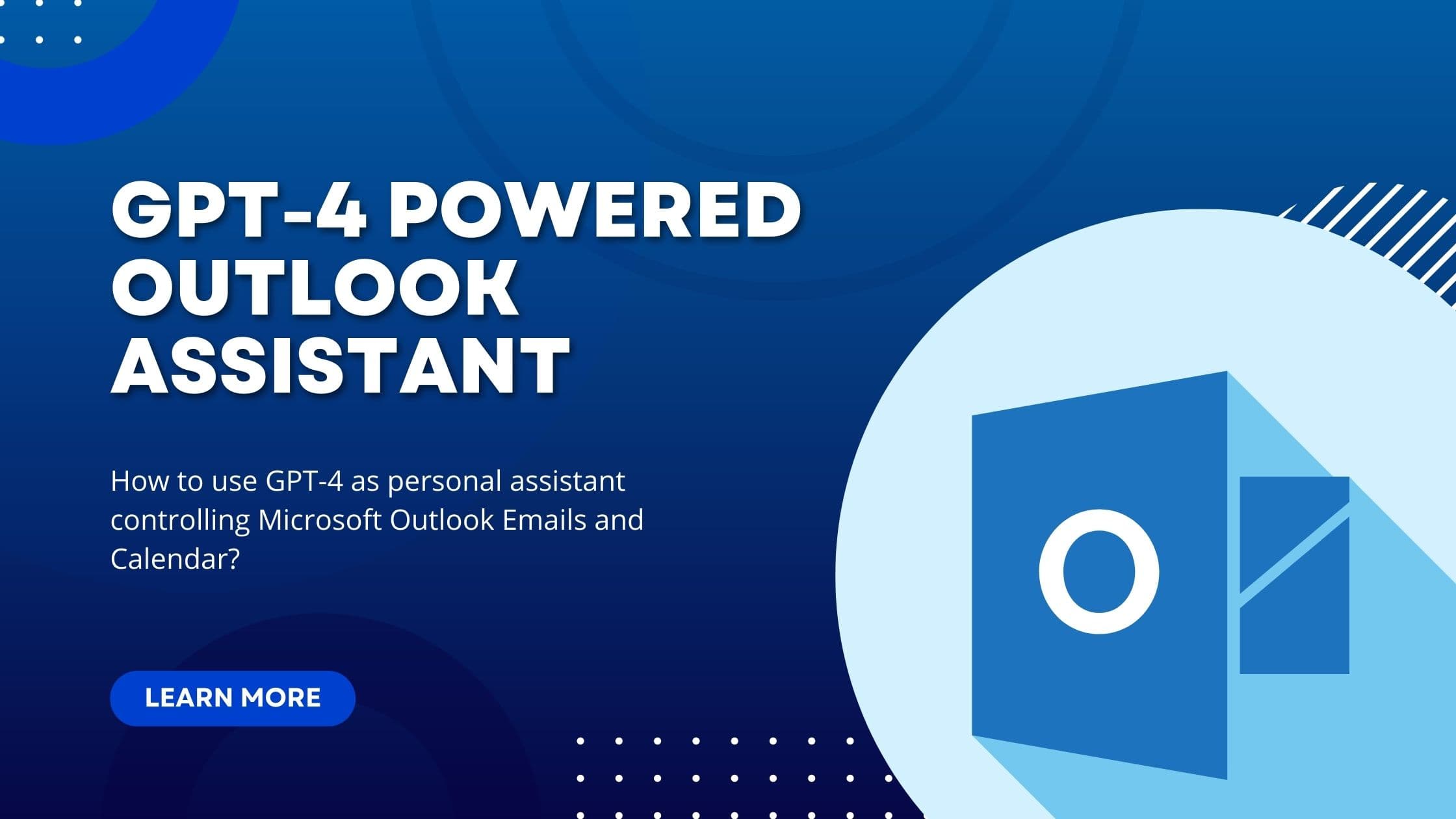How to build a GPT-4 powered outlook assistant?

Welcome back to our blog series on leveraging large language models! Today, continue the previously set path by showing you how to harness the power of GPT-4 in creating a smart assistant for Office365 using LangChain.
The idea of a virtual assistant is not new; we've all interacted with Siri, Alexa, or Google Assistant at some point. However, when integrated with Outlook 365, an assistant powered by GPT-4 can take our productivity to the next level. Imagine an assistant that can help schedule your meetings, manage your emails, remind you of important tasks, and even draft emails for you - all with an understanding of natural language that's remarkably close to a human colleague. Furthermore, while Alexa, Siri, etc. are also able to interact with Office365 in some ways, using GPT-4 as sort of your personal assistant provides two additional advantages: The model of GPT-4 is just miles better than Siri and Alexa - allowing for more elaborate assistance. And more importantly - with GPT-4 you can easily integrate this assistance functionality in your own product or company software - you are not bound to the Siri, Alexa, etc. interface.
In this blog post, we will walk you through how to build this assistant. We'll guide you from the initial setup of your development environment, to configuring LangChain with GPT-4, to integrating it with Office365, and finally, to training, testing, and deploying your new assistant. By the end of this post, you'll have a powerful new tool at your disposal, ready to help you streamline your work and enhance your productivity.
So, let's get started on this exciting journey!
LangChain Overview
LangChain, represented by the parrot and chain emojis, is a versatile software framework designed to simplify the creation of applications using large language models (LLMs)1. Since its inception in October 2022, LangChain has quickly gained traction in the tech community, thanks to its potential to streamline the integration of LLMs in a variety of use-cases, such as document analysis, summarization, chatbots, and code analysis.
The framework is the brainchild of Harrison Chase, who launched it as an open-source project. This initiative quickly gained popularity, attracting hundreds of contributors on GitHub and sparking lively discussions on Twitter, Discord, YouTube tutorials, and even meetups in tech hubs like San Francisco and London. Such wide-spread acclaim, led to significant financial backing, including a $20 million investment from Sequoia Capital in April 2023.
LangChain's broad utility is due to its extensive integrations and compatibility with numerous systems and data sources. As of March 2023, LangChain included integrations with cloud storage systems like Amazon, Google, and Microsoft Azure; API wrappers for news, movie information, and weather; support for syntax and semantics checking, and execution of shell scripts in Bash; multiple web scraping subsystems and templates; Google Drive documents, spreadsheets, and presentations summarization, extraction, and creation; support for web search using Google Search and Microsoft Bing; support for LLMs from OpenAI, Anthropic, and Hugging Face; and so much more. It can even read from more than 50 document types and data sources, underscoring its wide-ranging application potential.
While this alone would be an amazing testament to LangChains capability, there is more: Chains and Agents.
Chains in LangChain are a way to connect LLMs and potentially other entities in a logical sequence to solve complex tasks, ranging from simple text generation to sophisticated problem-solving. A simple chain would consist of a Prompt-Template, a Model (the LLM) and an output parser to get the LLM answer in your desired format. However there are more complex chains - the more interesting ones, where a chain consists additionally of indexes - datasources. This allows for "connecting" bespoke datasources to the LLM and incorporate it into your prompt. Basically providing the LLM additional information which are not part of it's training data.
And finally we have agents: Agents are the most powerful construct in LangChain. Some applications will require not just a predetermined chain of calls to LLMs/other tools, but potentially an unknown chain that depends on the user's input. In these types of chains, there is a “agent” which has access to a suite of tools. Depending on the user input, the agent can then decide which, if any, of these tools to call. Tools can be as simple as a calculator and as powerful as a full python runtime. So your agent are even able to run code as instructed by an LLM.
What's next?
If you want to use Language Models to chat with your BigQuery data, have a look at this next post.
Ever thought about how cool it would be to use GPT-4 to ask questions on YouTube videos? Read more about that in this post
And if you are interested in how to utilize GPT-3.5/4 to automate your data analytics, have a look at this csv analytics guide
------------------
Interested in how to train your very own Large Language Model?
We prepared a well-researched guide for how to use the latest advancements in Open Source technology to fine-tune your own LLM. This has many advantages like:
- Cost control
- Data privacy
- Excellent performance - adjusted specifically for your intended use